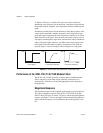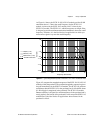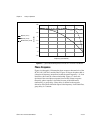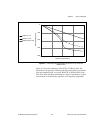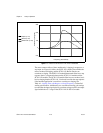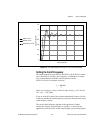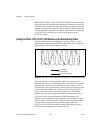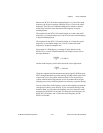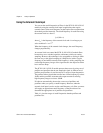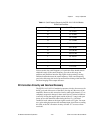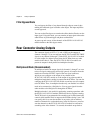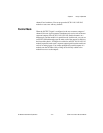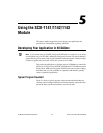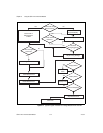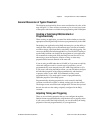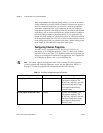Chapter 4 Theory of Operation
SCXI-1141/1142/1143 User Manual 4-14 ni.com
Using the External Clock Input
You can set the cutoff frequencies of filters in the SCXI-1141/1142/1143
module by using the external clock input in applications that require
external control of the cutoff frequency or that require finer resolution than
the module provides internally. The cutoff frequency for each filter using
the external clock as a base is:
f
ext
/(100 × n)
where f
ext
is the frequency of the external clock and n is an integer you
select such that 2 ≤ n ≤ 2
16
.
When the frequency of the external clock changes, the cutoff frequency
changes proportionally.
An external clock can control the SCXI-1141/1142/1143 module filters
because they use a switched-capacitor architecture, which uses analog
sampling. However, this technique is also susceptible to aliasing in much
the same way as the digital sampling of a DAQ device (with a Nyquist
frequency of one-half the external clock frequency). Analog sampling also
creates high-frequency images of the signal because the output waveform
has a staircase shape.
The SCXI-1141/1142/1143 module prevents these errors by using sets of
prefilters and postfilters that do not sample the signal. A different set of
prefilters and postfilters is used for each of 12 ranges of input frequencies.
The prefilters reduce signals that can alias into a lower frequency by at least
40 dB, and the postfilters reconstruct the output waveform, reducing
high-frequency images to at least –80 dB.
NI software automatically chooses the correct set of prefilters and
postfilters when you specify a cutoff frequency. However, when the
external clock input is used to set the cutoff frequency of a filter, you must
still supply an approximate cutoff frequency so that the software can
determine the appropriate set of prefilters and postfilters.
Table 4-1 gives the ranges of cutoff frequencies that the prefilters and
postfilters use.



